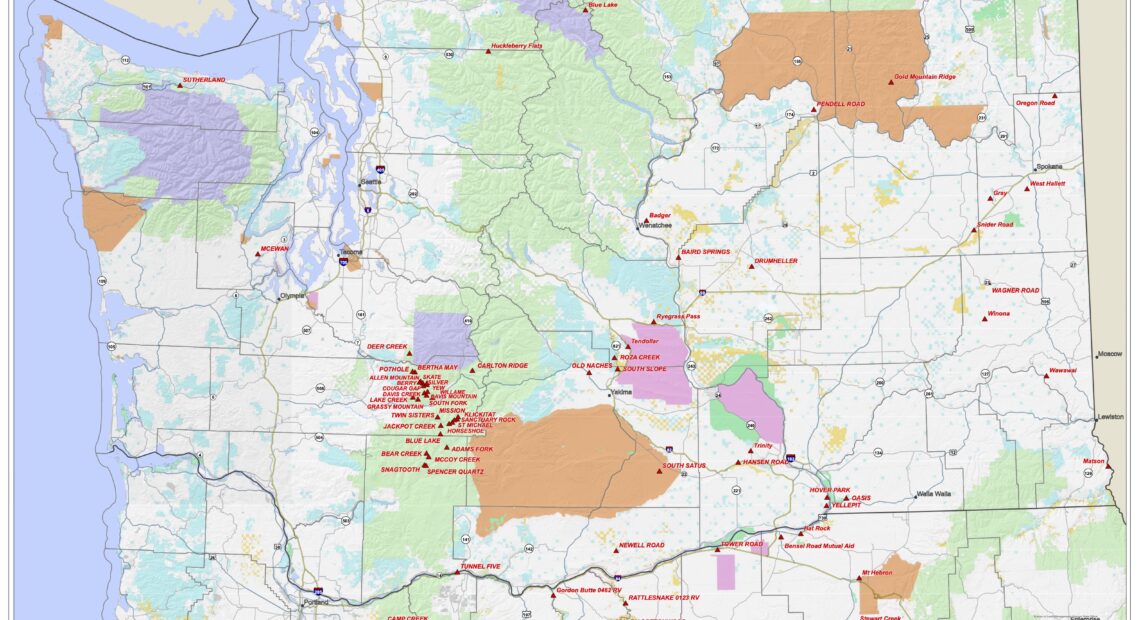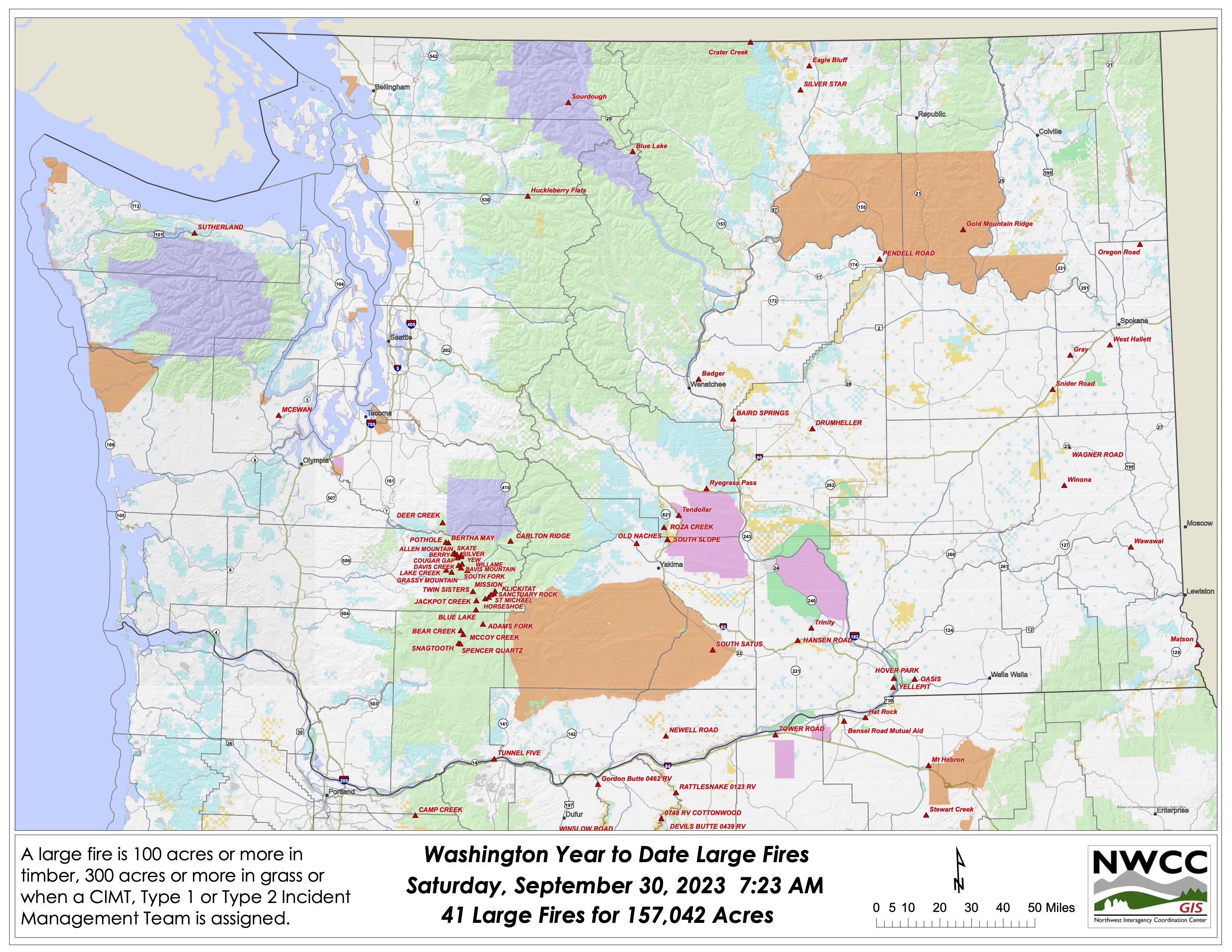
What impacts did wildfires have on the Northwest this summer?
Listen
(Runtime 1:01)
Read
Autumn has knocked on our doors and crossed our thresholds. With its arrival comes wetter, colder, darker days — perhaps some pumpkin-flavored treats as well — and hopefully, fewer wildfires. Heavy recent rainfall has dropped the wildfire potential outlook down to normal for the Northwest, according to the National Significant Wildland Fire Potential Outlook.
So, how did this summer fare compared to past fire seasons?
In Washington, a total of 165,365 acres burned, according to Angie Lane, who works for the Washington State Department of Natural Resources in the wildland fire management division. The 10-year annual average for acres burned is 472,881.
“We’re actually shaping up to be a statistically, really good year,” Lane said.
Still, Washington marked its second-highest number of fire-starts this year at 1,884. That falls just behind 2015 when 2,013 ignitions were reported.
The Northwest Interagency Coordinating Center reports 41 large fires burned in Washington this year, and 44 in Oregon. NWCC considers large fires to be 100 acres or more in timber, 300 acres or more in grass, or when a Type 1 or Type 2 Incident Management Team is assigned.
Of those large fires, NWCC reports that four in Washington were determined to be human-caused, and six in Oregon were. Here’s the big difference: Oregon’s large, human-caused fires burned 4,880 acres – Washington’s burned 15,283, according to NWCC.
With a lot of ignitions, there was a lot of activity across Washington. While the southeast region had more acres burned than the northeast region, the northeast area saw the most fires.
“However, our west side was also very active this year, we did see a lot of fires for the west side than we normally have seen,” Lane said,.
Fires burned in the south Puget Sound area, parts of Thurston County and into the west slope of the Cascades, Lane said.
In terms of the labor force, Lane said DNR was able to fill almost every position open for firefighting labor or move resources around to address needs. House Bill 1168 allowed the department to utilize heavy equipment operators to quickly establish fire lines, as well as advanced training hand crews to mop up and ensure fires were completely out.
Numbers aren’t the only way to measure fire season. Some wildfires that burned this year had serious and devastating impacts.
“Even though our numbers might say, ‘Oh, what a great fire season,’ that doesn’t give you the sense of what the impact was,” Lane said. “We did have a catastrophic year.”
The DNR is working to compare property loss to years past. According to a Sept. 21 news release from the department, over 400 homes were burned in Washington wildfires this year.
“Even that very first home that burns, that’s definitely catastrophic to the person who’s experiencing it,” Lane said.
Fires really kicked up this year across the Pacific Northwest in August when the Gray and Oregon Fires in Spokane County consumed a combined 20,902 acres.
Von Walden is a Washington State University professor who researches fire activity with the Laboratory for Atmospheric Research. While Walden said the fire season has been relatively quiet, “The fires that we have had have been close to urban areas, and they have therefore either destroyed structures and homes or they’ve put people on alert.”
The Gray and Oregon Fires claimed the lives of two people.
The Northwest also dealt with impacts from fires in Canada as smoke billowed over the border. This year, air resource advisors were deployed in the Pacific Northwest to provide air quality and smoke forecasts alongside fire incident information.
The biggest threat from wildfire smoke is the very small particulate matter carried within it. That’s a threat for anyone, not just those who already have respiratory illness, Walden said.
“When you breathe that particulate matter from the smoke, it can get deep into your lungs,” Walden said.
What kind of material a fire burns influences the particulate matter and its impact on people.
“If you have a very large fire in a forest that’s consuming trees, and really burning up those trees, it’s going to generate a lot more smoke and particulate matter that could potentially impact an urban area,” Walden said.
The Laboratory for Atmospheric Research tracks where fires are and what vegetation is burning and estimates how much smoke or particulate matter goes into the atmosphere.
“We really are seeing kind of a different type of summer, where we have perhaps an early summer, that’s more of a traditional summer, but July, August, September are really turning into a fire season, where many people in this area can expect to experience smoke and the associated health effects,” Walden said.
Even with a fair amount of precipitation recently, there is still a risk of wildfires.
“We are still in fire season mode,” Lane said.
















